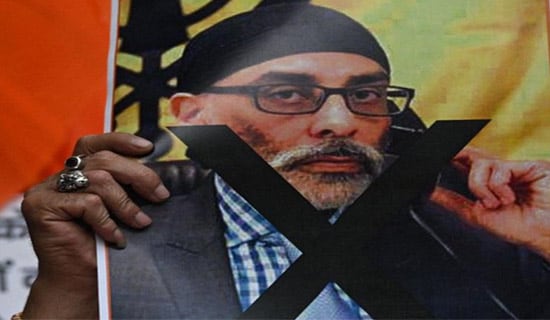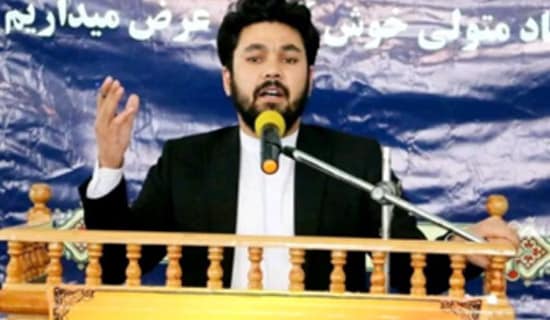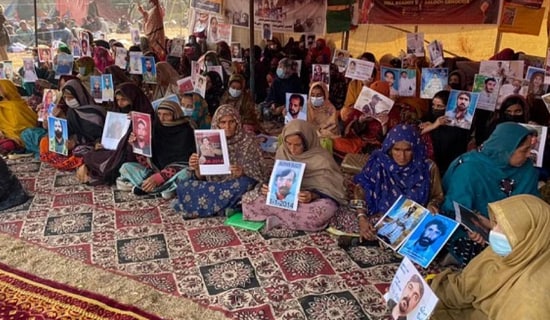Introduction
Since it burst on the scene as Al-Qaeda in Iraq, the organization now known as the Islamic State, or ISIS, has cut a wide and bloody swath through the Middle East, especially in Syria and Iraq. Many of its most notorious, high-profile actions involve ethnic and religious groups that ISIS has declared fair game: numerous massacres of every type against Iraq's Shi'a population, culminating in the 2014 Camp Speicher massacre; targeting Iraq's Yazidi population for extinction, including the August 2007 Qahtaniya bombings; and multiple attacks against Christians, including the October 2010 attack on the Syrian Catholic Cathedral in Baghdad and the total expulsion of historic Christian communities in Mosul and Nineveh Plains in 2014.

Screen capture of ISIS video, originally from Twitter, August 2014.
But the violence perpetrated by ISIS against the Sunni Arab Muslim population, ostensibly its most important core constituency, is sometimes less well understood or known, even though evidence exists in abundance. The recent mass killings of Anbar tribesmen in 2014-2015 and the mass slaughter committed in 2014 against the Shaitat[1] tribe in Eastern Deir Al-Zur, Syria are particularly noteworthy because of their sheer scope. The massacre of almost a thousand members of the Shaitat by ISIS is particularly interesting because of the video and social media material existing on it and because of strenuous media efforts by ISIS, continuing well after the act, to justify its actions.[2]
ISIS's Slaughter Of The Shaitat
The 90,000 strong Shaitat tribe's traditional strongholds lie south of the city of Deir Al-Zur, along the banks of the Euphrates in the towns of Abu Hamam, Al-Kashkiyah, and Ghranij. This is a solidly Sunni Arab Muslim area, with no ethnic or religious minorities to speak of, and the Shaitat reside near the valuable Al-Omar oil fields. During the anarchy and confusion of the Syrian Civil War, the region was seized by Jabhat Al-Nusra (JN) and localized FSA units in November 2013 from Assad regime forces only to lose it to ISIS in early July 2014.[3]
The ISIS takeover was initially easy, prepared by months of spadework among the Arab tribes of the region, including building relationships with younger members of local tribes, providing support and money. Some JN and Mujahideen Shura Council fighters seem to have switched sides. ISIS went as far as supposedly naming an Amir for tribal affairs, a Saudi named Dhaigham Abu Abdullah,[4] who if his name is any guide may be connected to the important Shammar tribal confederation found in Saudi Arabia, Syria and Iraq.[5]
Among the Shaitat, something went wrong in late July 2014.[6] Whether it was a generational struggle, tribal unhappiness with Islamist strictures against things like smoking, or a naked fight for power and wealth, after the arrest of three tribal members by the Islamic State, the well-armed Shaitat rose up - alone and unaided by any other FSA unit or tribe - and killed at least 11 ISIS fighters, five of whom were Shaitat themselves, including a local ISIS leader named Abu Ali Al-Shaiti.[7] Video of the Shaitat brazenly boasting of their deed was an irresistible challenge.[8] The much better-armed ISIS, flush with the military windfall of the fall of Mosul and its four Iraqi Army divisions, responded rapidly.
ISIS now extracted a terrible vengeance with hundreds of men and boys over the age of 15 shot or beheaded on April 13. Supposedly, this was retribution modelled on the destruction of the Jewish Banu Qurayza tribe at the time of the Prophet Muhammad, with ISIS considering the tribe to be entirely in apostasy. The video of the mass beheadings, taped live with no cutting away of the camera, is among the most terrible ISIS has made.[9] This is no slick production, but raw, immediate savagery. The video is filled with laughter, as the killers seem giddy and hysterical with their slaughter. A bound man is asked whether he wants to die by the knife or gunfire, he answers "by gunfire," and is beheaded anyway. A decapitated head is placed next to a bound, living man to terrify his last seconds. The victims are repeatedly taunted and cursed. Although ISIS supposedly used some Shaitat members to kill the Shaitat, one can also hear Saudi and Egyptian accents. The cameraman reassures the slaughterers that he is not filming them but only their "infidel apostate agents of the regime" victims. A slightly different video from around the same time shows former German rapper Deso Dogg (Denis Cuspert, aka Abu Talha Al-Almani) beheading different Shaitat.

Screen capture of ISIS video, originally from Twitter, August 2014.
Incredibly, just as the slaughter was occurring, the paramount Sheikh of the Shaitat Rafaa Aakla Al-Raju, interviewed in Istanbul, noted that the battle was going well and that the hit and run operations against the "Nusayri Iranian Safavid" ISIS continued.[10] He did ask for urgent support from other tribes and regional powers. In another video, tribal members were less upbeat, and pledged their loyalty to ISIS and asked for "innocent" tribal youth who were not involved in fighting to be released.[11] Many Shaitat who were not slaughtered fled, hundreds were imprisoned, and other Sunni Arab tribes eventually asked "Caliph" Al-Baghdadi for the Shaitat to be forgiven.[12]
ISIS Formally Forgives The Shaitat
Selections from the slaughter video were used repeatedly by critics of ISIS, including in a U.S. government video.[13] By the fall of 2014, ISIS deigned to formally forgive the Shaitat and thousands were allowed to return to their lands in November. ISIS commanders told tribal elders that the Shaitat were not allowed to assemble in large gatherings without permission, were prohibited from carrying weapons for any reason, must hand over all weapons, reveal weapons caches, turn over any traitors, and "admit that anyone who opposes the Islamic State is an apostate."[14]
The conditional forgiveness of the Shaitat would be documented in a much more polished ISIS video than the raw August 2014 slaughter footage. In January 2015, ISIS Wilayat Al-Khayr (Deir ez-Zur) media office issued the 12:48 long production titled "Except for Those Who Believe."[15] The high-definition video opens with combat footage from captured cellphones showing tribal leaders calling for an uprising against the "Nusayri Daesh Organization." Lines of defeated young men being led to their death are then shown, with one taunted that "this guy rejected the Sharia of God in a demonstration." ISIS leaders and "some of the sons of the Shaitat" go on to explain where the problem came from: There were four groups among the Shaitat that opposed the Islamic State: "oil thieves" and merchants, highway robbers who made "corruption on earth, Assad regime ("Shabeeha") agents, and Sufis who follow "obscurantist practices" and never did anything to oppose the Assad regime.
The rest of the video documents the return of the repentant tribe lining up to receive repentance documents, turn in weapons, and dig up weapons caches. They are admonished to be loyal, while boys and young men praise Al-Baghdadi and the Islamic State.
SUPPORT OUR WORK

The videotaped killing of the Shaitat is probably the most detailed mass killing of Sunnis by ISIS. The similar, roughly contemporaneous, mass killings of the Albunimr in Iraq's Anbar province are not nearly as available. ISIS would continue to return to the issue, as if it felt the need to explain itself over and over in the coming months.
In March 2015, the same press office of Wilayat Al-Khayr released a video showing the repentance of Mansur Al-Shaiti, last seen leading tribal fighters against ISIS in captured video used in the previous ISIS production on the Shaitat.[16] Mansur blamed "gangs who do not fear God," who came to the mosques and told people that ISIS would take the women, kill the children, and destroy the houses of local people. This had not been true. He had made a mistake, repented, been forgiven, and now things were fine between ISIS and local people.
One of the reasons that ISIS seems to have continued to produce material on the Shaitat is that at least some tribal elements have continued fighting. Mansur is shown with an AK-47 to underscore that at least some trusted Shaitat need not be disarmed. But in May 2015, still another ISIS video showed a Kosovar Albanian fighter killing Shaitat tribesman Ibrahim Shraideh with an RPG.[17] Shraideh had killed two ISIS fighters with an RPG. Still other Shaitat were killed after ISIS seized the historic Syrian town of Palmyra in late May.[18]
ISIS went once more to the well in June 2015, with a short video showing the return of more Shaitat, this time to their village of Abu Hamam.[19] One tribal elder repeatedly admonished Shaitat who are still fighting to "return to their religion" and said that he was ready to fight them even before ISIS does. Still another returnee called on all Sunnis to unite to fight their enemies and conquer Damascus.
An Object Lesson In Raw Terror
ISIS's use of mass, graphic violence against the Shaitat was an object lesson in raw terror, but it has felt the need to explain itself and to bring some sort of closure to an Arabic-language audience. As Haian Dukhan and Sinan Hawat have noted, this violence "subtly invites recruits either to choose the winning horse or die."[20] While the initial grotesque slaughter of the first video has not been repeated, the concept of punishment has been hammered home in repeated ISIS video productions seeking to address an ongoing problem among a population - i.e. Sunni Arab Muslim tribesmen in Syria - that is of supreme importance to the burgeoning Islamic State. The Shaitat, at least on video, keep repenting, being forgiven, returning home, dying, and evidently still fighting the Islamic State.
*Alberto M. Fernandez is Vice President of MEMRI.
[1] Al-Shaitat can also be transliterated Al-Shu'eitat.
[2] English.al-akhbar.com, December 18, 2015.
[3] Globalpost.com, August 11, 2014.
[4] reddit.com/r/syriancivilwar/, February 2015.
[5] Youtube.com/watch?v=ZeApAxB_VYU.
[6] Youtube.com/watch?v=u_r8HDwLamE.
[7] Youtube.com/watch?v=urFs6x9jlME.
[8] Lbcgroup.tv, July 31, 2014.
[9] "ISIS massacre against the Shaitat Clan in Dairzzor-13.8.2014," Youtube.com/watch?v=IWUtFkXlmlQ&bpctr=1434837297.
[10] Youtube.com/watch?v=Mp27mADEqjs.
[11] Youtube.com/watch?v=BoMAaILw2SM
[12] Youtube.com/watch?v=MgvWNS_e7go
[13] Youtube.com/watch?v=DVLMlhIPTsg
[14] Syriahr.com/en, November 26, 2014.
[15] Jihadology.net, January 11, 2015.
[16] Youtube.com/watch?v=8Jvc-bjIlfA
[17] Dailymail.co.uk, May 21, 2015.
[18] Telegraph.co.uk, May 21, 2015.
[19] "Return of the Residents of the Village of Abu Hamam," Jihadology.net, June 2015.
[20] Haian Dukhan and Sinan Hawat, "The Islamic State and the Arab Tribes in Eastern Syria," E-International Relations, Dec 31, 2014.




